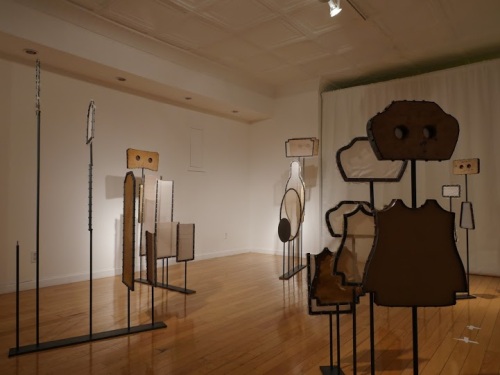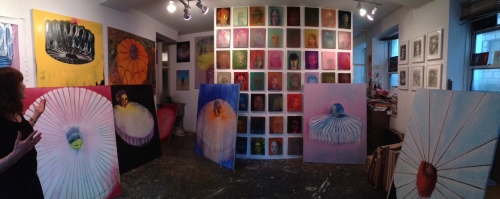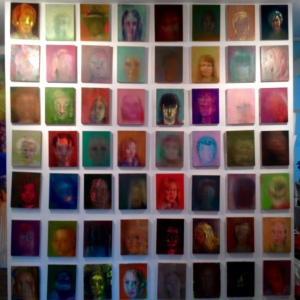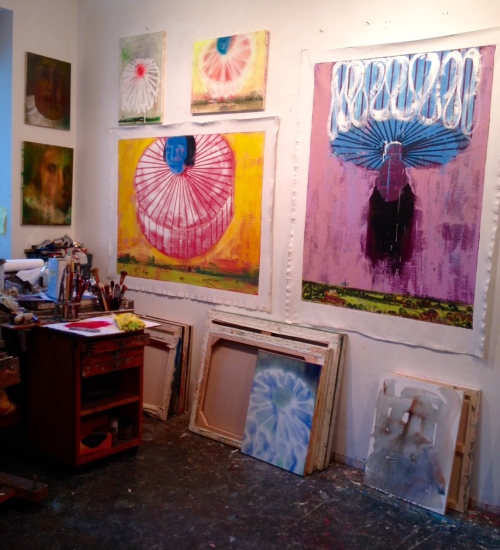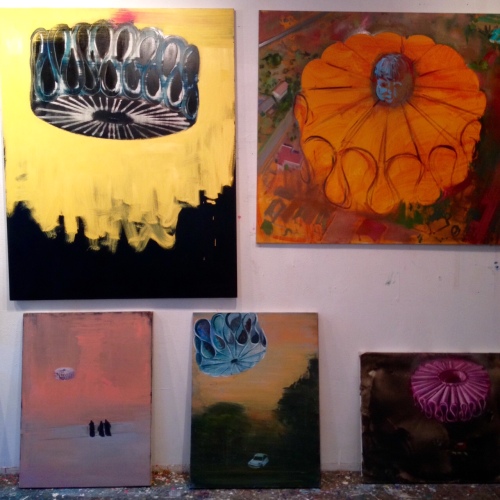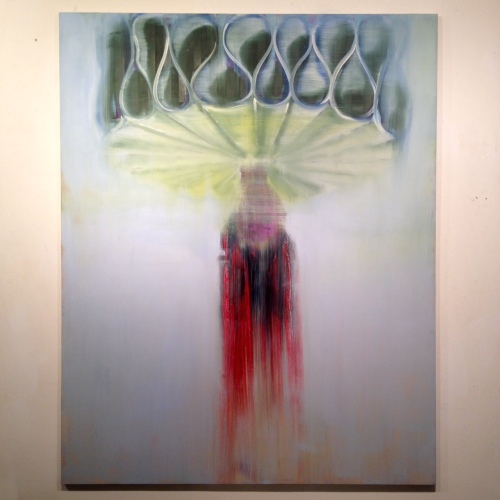Themselves Productive
by Paul D'Agostino

Themselves Productive: New Paintings by Liv Mette Larsen
The more you become acquainted with the foundational forms and material underpinnings of Liv Mette Larsen’s works, the more you come to realize the generally uninterrupted extent to which they are all procedurally interlinked, conceptually interconnected, holistically and harmoniously cross-informed. The nature of this realization is perhaps ultimately the most abstract product of Larsen’s hand-pedaled, factory-like process that is itself generative, manually fabricational, iteratively productive.
One should not mistake any of the above as a suggestion that this now Brooklyn-based painter—Norwegian-born, then eventually NYC-bound by way of a period of teaching and artistic activity in Germany—presents her viewers with compositions full of visual convolution, nor that her pictorial processes and products register as even remotely mechanical. On the contrary, Larsen’s essentially representationally-driven forms are dimensionally simplified distillations of at times complex, at times relatively basic structures that stand as variably recognizable markers of place—localized neighborhood skylines, for instance, or readily distinguishable factories, as is the case in her series Concrete Factory / Slemmestad Fabrikker. Working from photographs or observation, Larsen breaks up, breaks down and flattens her chosen structures’ aspects and facets into a series of characteristic shapes, then carries them into so many lightly, almost happily handled compositional arrangements that serve as her platform to explore the chromatic richness and occasional quirks of her long-standing materials of choice—egg tempera on linen treated with rabbit skin glue.
Larsen’s largely earth-tone colors run a full yet quiescent range. She’s not shy at all about employing purples, yellows, oranges and greens to depict objects that might actually be just grey, in other words, but not even the brightest reaches of her palette shout or cry out. Rather, her colors murmur and hum like the low din of machinery, or like a calm flow of traffic along an urban block, maintaining nonetheless all the chromatic lushness and toothsome textures of the powdered pigments and egg mediums she uses to mix them into life. Backgrounds are sometimes the areas where Larsen allows colors to visually intermingle and bleed through one another, especially in her larger works. Consequently, her montages of middle- and foregrounded forms, often filled in with more uniformly viscous admixtures, begin to come across as depth-creating, footprint-stamping, colorful shadow-puppet-like characters—a troupe of implicitly post-industrial, meta-structural actors, let’s say, playing stop-motion roles of form-holders, chroma-bearers and spatial dwellers on some outdoor stage on a forsaken, extra-urban stretch of land, on a fall or spring afternoon in which mild temperatures and overcast skies cooperate to make the setting that much simpler to enthuse.
In Larsen’s creative landscape, some of the forms, colors, compositions and ‘characters’ she develops will then reemerge in kindred bodies of work. Shapes appear in different proportions in other paintings and collages; collages take color cues from paintings and watercolors; watercolors and collages inform compositional and chromatic choices in paintings. And of course, Larsen keeps an ever-sharp eye on how subtle shifts or surprises in one productive mode might lead her to insights in another. All this from regarding very closely and formally dismantling a building or two, then turning constituent parts into inputs for serialized processes made manifest in interconnectedly generative ways. A landmark fabrikk in Norway, as it were, becomes a manufacturer and remanufacturer of itself. And Larsen’s creative factory just keeps on humming. The characters in her plays keep doing their happy thing.
________________
This essay was composed for Liv Mette Larsen’s exhibition catalogue for Concrete Factory / Slemmestad Fabrikker, the artist’s solo show at Trafo Kunsthall in Trafo, Norway. Her show is on view from 6 May to 17 June, 2017. More information about the exhibit and Trafo Kunsthall can be found here. More information about Liv Mette Larsen is on her website, here. Installation image courtesy the artist and Trafo Kunsthall.
Paul D’Agostino, Ph.D. is an artist, writer, translator, curator and professor living in Bushwick, Brooklyn. More information about him is available here, and you can find him as @postuccio on Instagram and Twitter.




